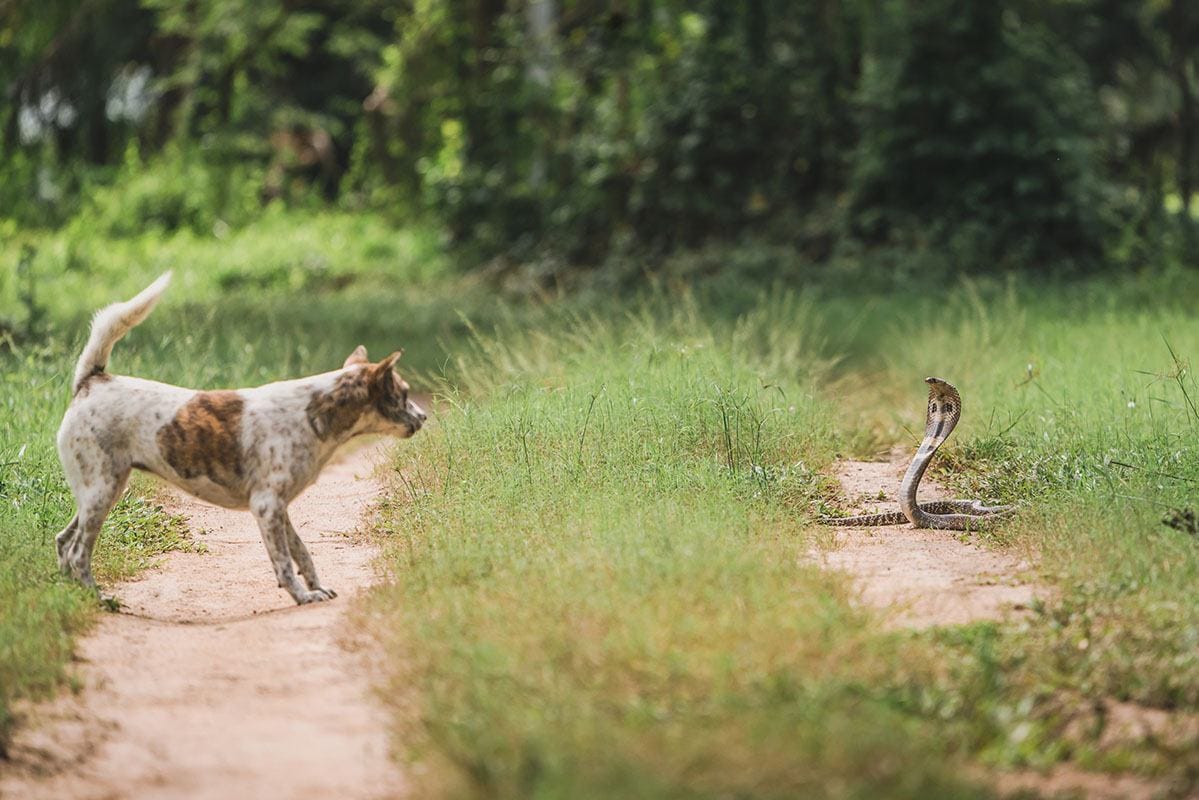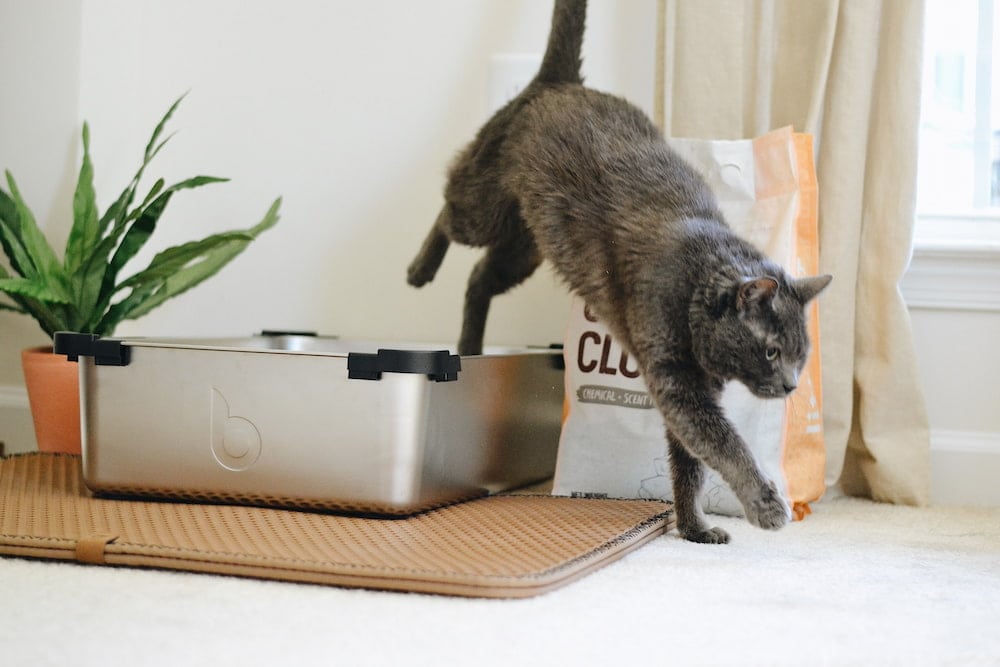VET APPROVED

The information is current and up-to-date in accordance with the latest veterinarian research.
Learn more »Click to Skip Ahead
If you live in an area where venomous snakes are around, the fear of your dog being bitten can be overwhelming. Very few snake species are aggressive by nature, and if they sense a larger predator like a dog, they will freeze or retreat. The trouble is that many dogs, particularly terrier breeds, will chase or attack a snake, which is precisely why they get bitten. This is an instinctive behavior, which makes it especially challenging to change. Aversion training teaches a dog that something is unpleasant or should be feared, and any form of training that relies on a negative stimulus is going to be less successful than one that is seen as a positive. Therefore, we’re going to give you some training tips to help you redirect your dog’s attention away from danger.

Start With The Basics
Before you even think about training your dog what to do if they encounter a snake, you need to be 100% on top of basic obedience training, particularly recall. Teaching your dog to come to their name or a whistle is essential, and you must ensure they will obey that command no matter what sort of distractions are present. Some dogs respond particularly well to a squeaker. If your dog doesn’t drop everything and come when you call, the safest option is to keep them on a leash.
The command “leave” or “drop it” is also an important one, not only in this situation, but in so many different scenarios!
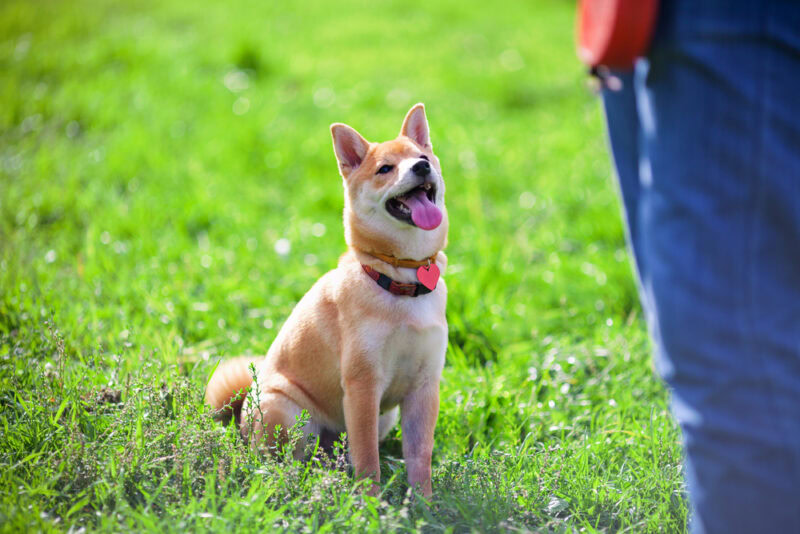
Research the Area
Whether it’s where you live or somewhere you are visiting, it’s helpful to familiarise yourself with the snakes in the area. This interactive map can help you with your research. Some are more aggressive or venomous than others, and it’s always helpful to be able to identify them by sight in case your dog requires treatment for a bite. Never try to catch or kill a snake – this is when the majority of snake bites on humans occur.
Equipment You’ll Need
- Treats
- Rubber snakes – various shapes and sizes
- A selection of snake scents – you can purchase freeze-dried snake segments, snake skins, and other weird and wonderful options. Ideally, a variety of different snakes would be useful. Rattlesnake is the most common one sold.
The aim of this training isn’t to teach your dog to be afraid of snakes, but what to do if they see one. If you really commit to this training, you should hopefully have a dog that will associate seeing a snake with performing an action. Just as the word “sit” means to sit, we want the appearance or scent of a snake to mean ‘return to you’.
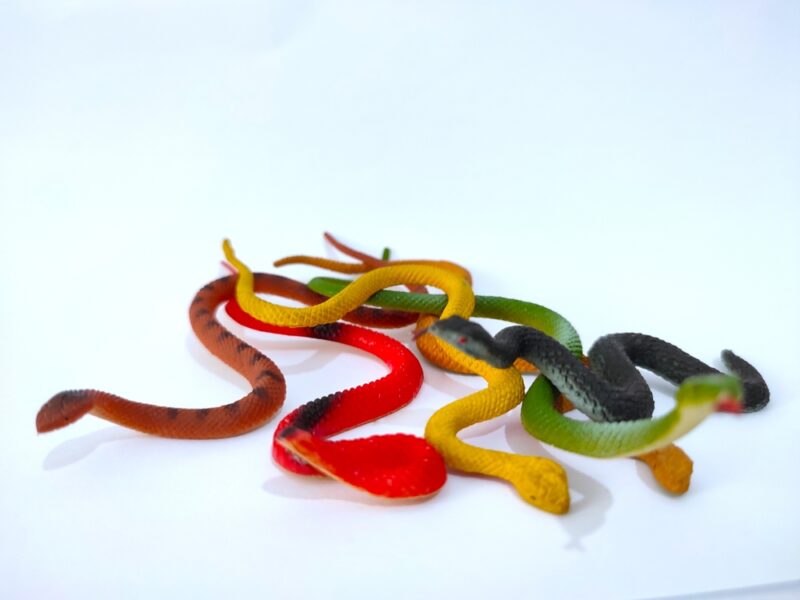
Steps to Success
- Start at home – perfect the training in a controlled environment before taking it on the road. Once you are confident that your dog is avoiding all appearances and scents of snakes, repeat the process in a field or area where they may be more distracted until you are happy that they are turning away from all things snake every time.
- Recall with stationary snakes – start by placing some rubber snakes around the yard/garden; some in plain sight, others hidden under bushes, etc. Every time your dog approaches or sniffs at a snake, call or whistle for them. If they come to you, reward them – the faster their response, the more excited your praise should be. Continue until they are ignoring the snakes. Do not take them to the snakes or encourage them to approach them. The reward must come from leaving the snakes, not seeking them out. Only offer praise/treats when they are back with you, not when they notice the snake.
- Add in movement – this is easier if you have some help. Tie some fishing line or thread to some of the rubber snakes, and repeat the above process but with moving snakes.
- Add scent – apply some of your snake scent to your rubber snakes, and repeat the steps above.
- Use only scent – this will help to teach your dog to come away when they just smell the snake, not just see it.
- Try without your input – by this stage, your dog should be turning away from the snake or snake scent and coming to you, without you needing to call them.
- Add in sound – we all know that telltale rattlesnake sound, and we need our dog to equate that sound with you calling them. You can find various rattlesnake sound clips, videos, and even ringtones online. Play the sound, call them back, and reward them, repeating until they come to you as soon as they hear the rattlesnake sound.
- Add in distraction – Repeat steps 2 – 7 away from home.
The difference between this and aversion techniques is that it teaches your dog that ignoring the snake or its scent is a positive thing, and is likely to earn them a reward. You need to keep this in mind when you finally take your dog into higher-risk scenarios and they suddenly return to you, looking for a treat. Not only should you give them one, but you should put a leash on them and be wary of your surroundings.

Frequently Asked Questions (FAQ)
What About Using Shock Collars?
You may see some methods that use negative stimuli, like shock collars, to create a fear response to snakes/snake scent. The problem with this method is that, even if you pair this with a reward when they come back to you, punishment techniques are more likely to cause fear and confusion, and creating a negative association with a snake could make your dog more likely to attack it.
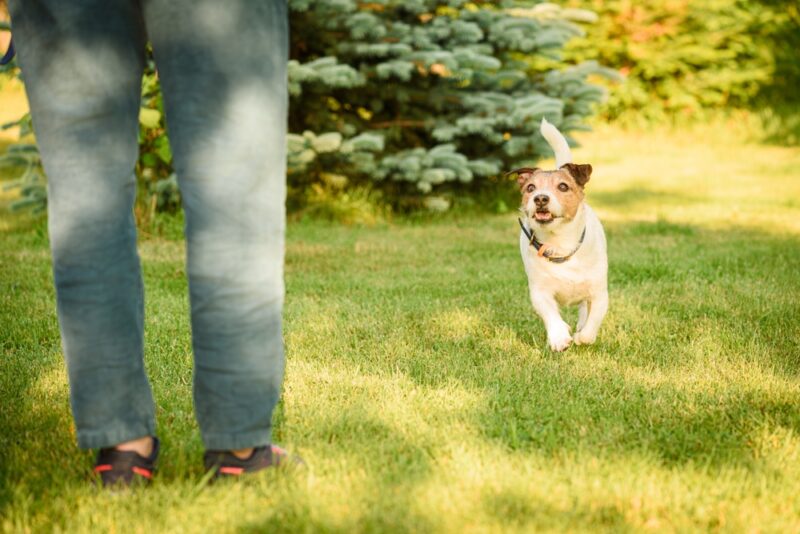
Won’t My Dog Start Looking For Snakes To Get A Reward?
It’s true that some dogs are wily enough to work out ways to cheat the system, but provided you haven’t rewarded them for pursuing, picking up, or searching for the snake, it is unlikely that they will start hunting them in the hopes of getting a reward. This is why it is important to only reward and praise your dog when they have come to you, not when they find a snake.
What Do I Do If My Dog Is Bitten By a Snake?
No matter how much you work on this training, there will always be a chance that your dog could be bitten, and the most important thing to do is not panic. Do not attempt to suck out any venom or clean the wound. If you can see the snake, or even safely take a photo, this can help identify it so that the right antivenom may be administered. Only do this if you can do so from a safe distance; do not attempt to catch or kill the snake.
If a limb has been bitten, try to keep the area lower than the heart. If you can, apply a (preferably cool) compress to the wound, and if possible, wrap the limb with a firm bandage. Transport your dog to the nearest veterinary hospital, phoning ahead with as much information as you can.

Final Thoughts
We can never avoid every danger out there, but we can take steps to minimize the risks. When it comes to snakes, dogs – some more than others – are more likely to be bitten than humans, as their natural curiosity and instinct to chase can lead to unfortunate confrontations.
There are snake aversion techniques that will train your dog to form a negative association with snakes, and these can be effective. However, giving your dog a clear message of what to do when they see, smell, or hear a snake is more likely to be successful when turning away from the snake means something positive.
Always start with basic training and be certain that your dog’s recall is spot on before trying to teach anything more complex. Following the steps above may not 100% guarantee your dog will not be bitten by a snake, but if they learn to come to you whenever they encounter one, they are more likely to be safe, and may even act as an early warning for you.
If in doubt of your dog’s ability to come when called or stay away from dangers like snakes, the safest option is to keep them on a leash.
Featured Image Credit: Tharaka Wickramarathna, Shutterstock
